Web analysis and consent

by Olaf Brandt
Consent banners can be found on almost all websites and apps. However, they rarely meet all legal requirements. This is because these are extensive and without a manipulative design it is generally not possible to achieve high approval rates. For example, the data protection authorities are calling for a “Reject all” button at the top level with the same design as the “Accept all” button.
How can a maximum data basis for web analysis and compliance with data protection requirements be reconciled?
Instead of trying to achieve a high approval rate, it is advisable to start with the approval requirement. The decisive factor for a maximum database and successful data-driven marketing is the independence of consent in web analysis.
In addition to tracking that requires consent, there are currently three variants that do not require consent:
- Session-based tracking
- Combination of cookie-based tracking after consent and session-based consent-free tracking
- Consent-free tracking with required cookies (CNIL)
In variants 1 and 3, website operators can even completely dispense with the less popular Consent Management.
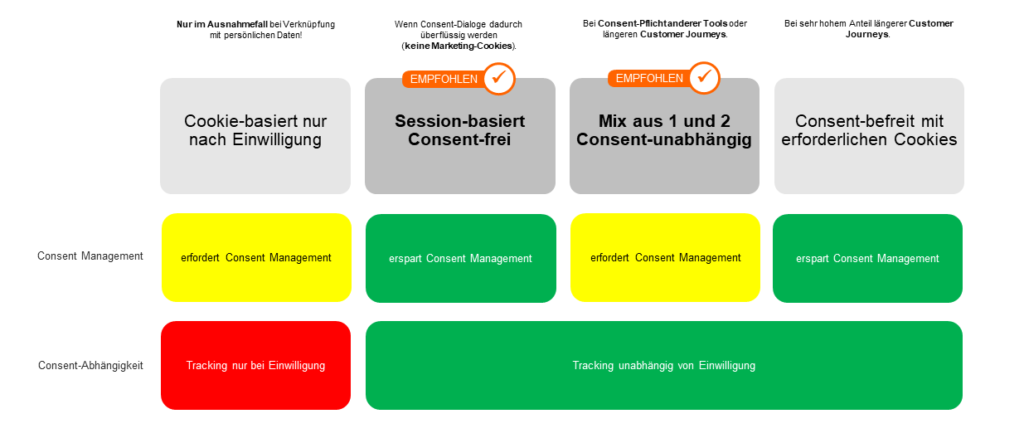
What are the advantages and disadvantages of each option?
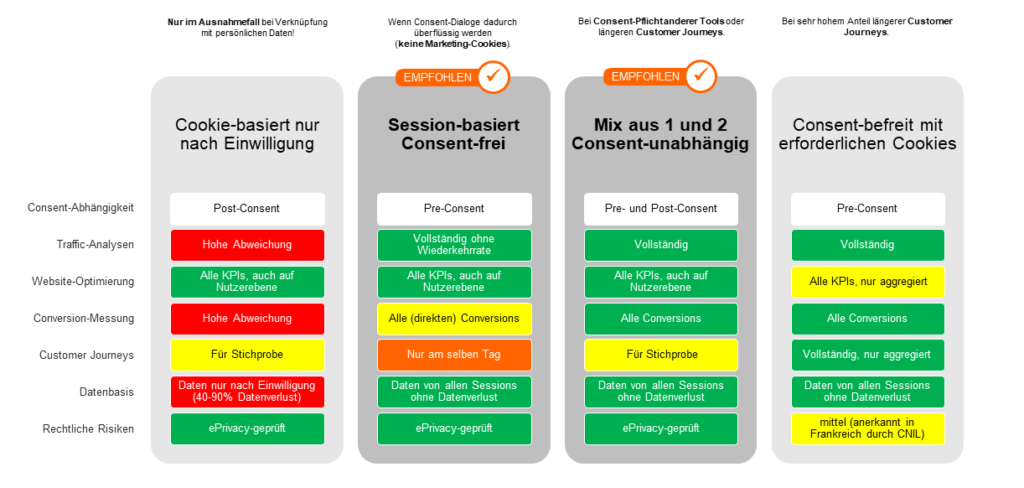
All four variants can be realized with etracker analytics. The website operator decides which variant he wants to use.
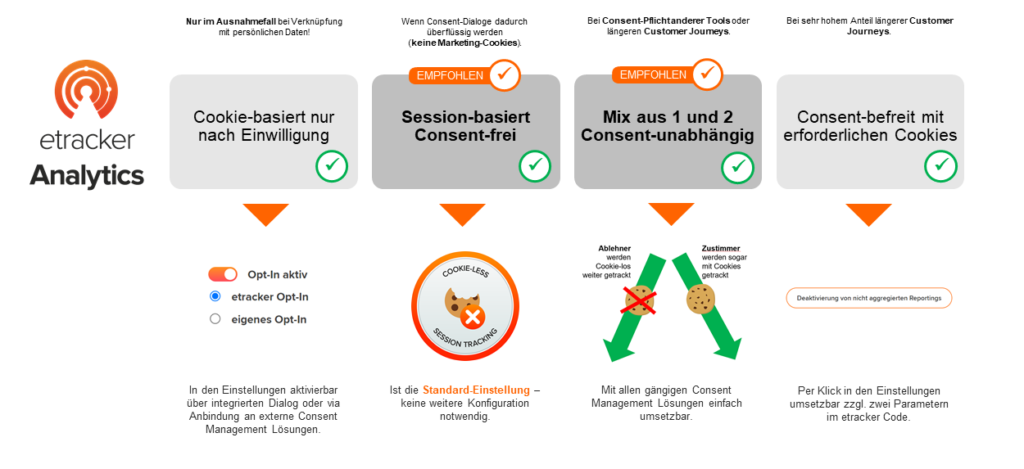
The session-based consent-free tracking with etracker Analytics, which is active by default, can be customized. The underlying legal requirements are fulfilled by appropriate configurations. When connecting external consent management tools, care must be taken to ensure correct implementation and design.
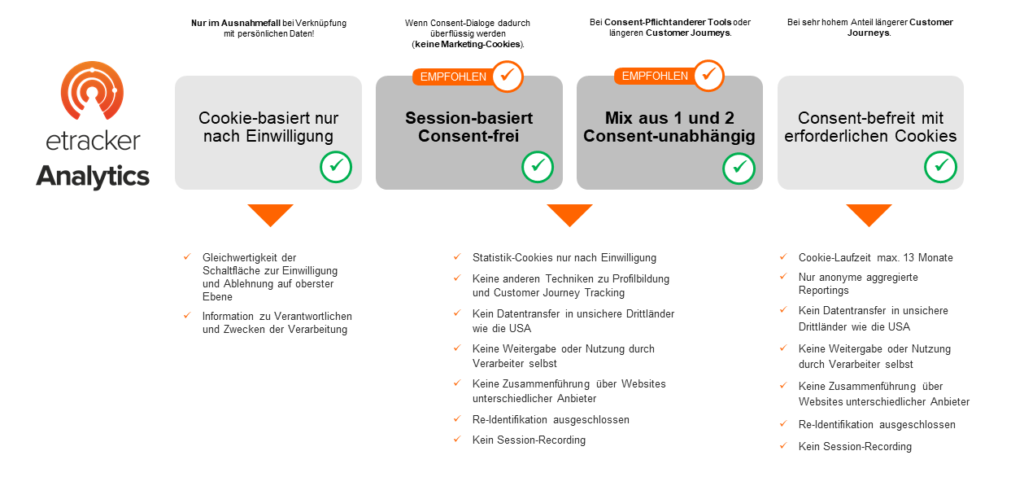
In contrast, the legally compliant use of Google Analytics is only possible with consent. To make matters worse, in addition to consent, agreement to the risks of US data transfer must also be obtained.
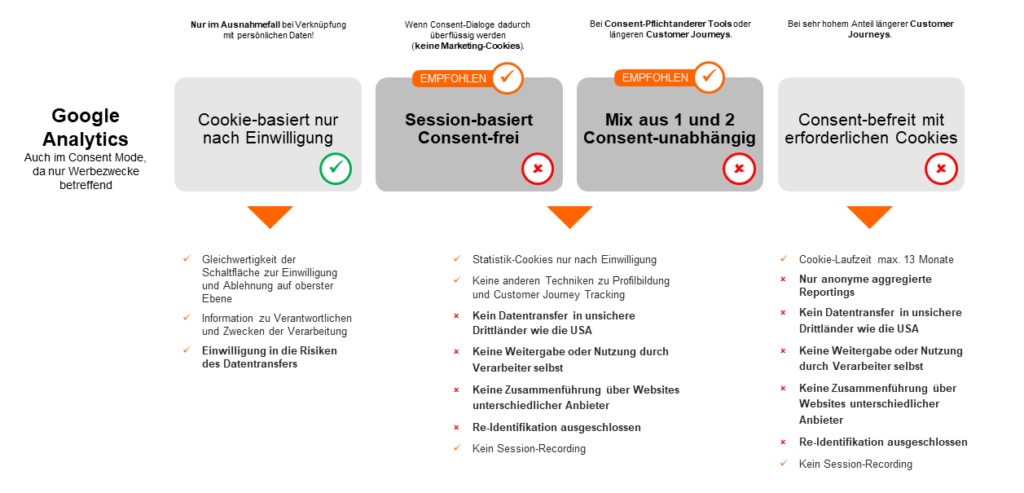
For website operators, web analytics is a central component of their digital business. Fortunately, data-driven control can easily be brought into harmony with legal requirements. When using etracker analytics, there are various ways to do this, all of which are technically fully developed. The two options recommended by etracker are also legally established and recognized. This is confirmed not least by the ePrivacy seal and expert opinion:
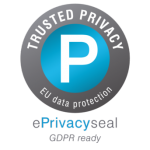
“In cookie-less mode (standard mode), the use of etracker Analytics is lawful without any consent requirement.”
Disclaimer
These statements do not constitute legal advice and cannot replace individual legal advice. They are a professional discussion and summary of the topic. If necessary, we will be happy to put you in touch with a specialist lawyer.
Stay barrier-free: Design cookie banners with the etracker consent manager
Taking a relaxed approach to the new consent management regulation

